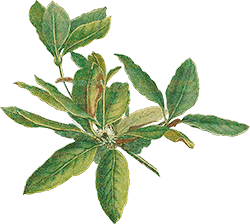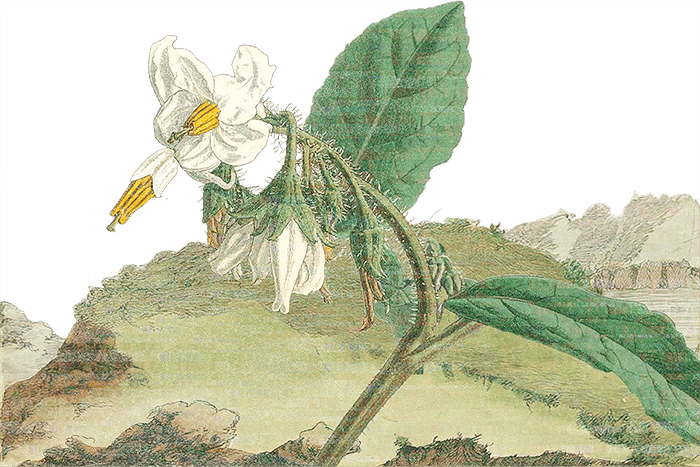On today’s show we learn about the White-winged Flufftail, a critically endangered avian native to Africa, specifically Ethiopia and South Africa.
Rough Transcript
Intro 00:05
Welcome to Bad at Goodbyes.
On today’s show we consider the White-winged Flufftail.
Species Information 02:05
The White-winged Flufftail is a critically endangered avian, a bird, native to Africa, specifically Ethiopia and South Africa. Its scientific name is Sarothrura ayresi.
The White-winged Flufftail is small bird, measuring roughly five and half inches beak tip to tailfeather with a wingspan of about nine inches and weighing roughly one ounce.
Description
Their plumage is a warm reddish brown on their head, breast, upper back and tailfeathers. The lower back and wings are black, marked with white spots and lines. And their belly and their secondary flight feathers (revealed only when the wings are spread) are white; which gives the White-winged Flufftail part of its name. The other part, the flufftail part, describes the species’ tailfeathers which are short and have a soft, downy, fluffy appearance. This characteristic is more more pronounced in other species in their genus, like the Red-chested Flufftail or the Madagascar Flufftail but in general flufftails have a kind of cottonball poof at their rear.
So between that and their contrasting range of plumage and markings, the White-winged Flufftail has a very textured and complex appearance, a camouflage in its native habitat, that reflects its primarily ground dwelling behavior.
Behavior
The White-winged Flufftail is considered terrestrial, meaning that it spends most of its time on the ground, hidden within dense vegetation, in reeds and grasses, primarily walking, slowly, stealthy, avoiding detection. When threatened it will briefly take flight but only a few feet in the air, only for a few dozen yards before diving back into the brush cover.
It is elusive, secretive, relying on stealth and avoidance as a defense from likely aerial predators like Harriers and Hawks.
Relatedly it is crepuscular meaning that it is active primarily during the twilight at dusk and dawn. Only forging and calling, in low light, spending the daylight and moonlit hours hidden away.
It is a solitary bird, generally observed alone, or in mating pairs, it does not flock or congregate in groups and motion sensor cameras have observed intraspecies and interspecies territorial behavior. Males will flash their white wing patches, charge and make hissing sounds at both other members of their species and at small birds of other species in defense of their territory. An individual’s or mating pair’s territory is roughly 8 acres. And all day-to-day activities (roosting, mating, feeding) take place in these relatively small densely vegetated plots.
The White-winged Flufftail is omnivorous, feeding on beetles, moths, flies, spiders, and small crustaceans, as well as grain seeds and plant shoots. The Flufftail forages from the safety of dense cover in microhabitats where its prey is likely to be concentrated; soft muds and in shallow water, plucking prey directly from the ground, from plant stems, and from the water.
In The Dream
————
In the dream,
With anticipation of the twilight, a softening of contrasts, an easing of intensities
Here in the hours between sun and moon, or moon and sun, interim, liminal.
In that time between times, to live most fully.
to celebrate in blurred light, under purpled skies,
sharing the bright stitchings beneath our dark cloak, calling to our love among the reeds.
Here in this brevity, where the veil is thin,
We feast, we sing, we stretch our wings.
In the dream.
————
Reproduction
The White-winged Flufftail forms monogamous pairs to mate, though we do not know whether these pairs persist across mating seasons. Mating season is the summer rainy season, and camera traps have captured some courtship behaviour, specifically a distinct short flight wing-flapping, performed by both males and females, in which their white secondary flight feathers are prominently displayed, a kind of attention-grabbing demonstration of their suitability as potential mates.
Once a pair bond forms and mates a nest is constructed, on the ground, in dense vegetation with a preference for areas of tall, mixed sedges in shallow water. Both parents incubate the 3-5 eggs and defend the nest for roughly 2-3 weeks and then the chicks hatch precocial, meaning they are born relatively well-developed and are quickly mobile, able to leave the nest and begin walking soon after birth. Shortly after they emerge from the nest, the parents shepherd the chicks to areas of even denser vegetation and deeper water, for protection.
We do not know how long the chicks remain in parental care, but they reach reproductive maturity in about a year. Individuals can live up to 10 years old.
Habitat
The White-winged Flufftail is native to Africa, with two populations, in Ethiopia and South Africa. For most of the 20th century it was thought that these were a single migrating population, but recent research has determined that these are two wholly distinct populations, which do not migrate and most likely do not interbred. Comparative genetic analysis of both populations is ongoing, but it is unlikely that the species, which is not a strong flyer, crosses this 2000 mile expanse.
We find both populations in high-altitude marshlands, in Ethiopia, in highlands near Addis Abba, and in South Africa in the provinces of the Eastern Cape, Mpumalanga, KwaZulu-Natal, and the Free State.
In Ethiopia, their habitat is roughly a mile above sea level and in South Africa ranges from roughly one half to one mile in elevation. In both locations, we find shallow, slow-flowing water, and peaty soils. Peat is a kind of soil formed in water-saturated environments where plant material only partially decomposes, so the soil has high organic matter content, is acidic, and holds moisture.
Within these marshlands, the White-winged Flufftail prefers specific water depths, between 1-10 inches and is not found in areas that are either too dry or too deeply flooded. And they prefer very dense vegetation coverage: sedges, tall watergrasses, and reeds, ranging from 1-3 feet in height.
In both locations, summer highs average in the mid to upper 80s°F and winter lows in the mid-50s°F. And both regions see between 25-30 inches of precipitation per year.
The White-winged Flufftail shares its habitat with:
Common Reed, African Marsh Harrier, Southern Cutgrass, Slender Knotweed, Denham’s Bustard, Blue Crane, Vlei Rat, Jersey Cudweed, African Grass Owl, Southern Oribi, Black Stork, Yellow-breasted Pipit, Rudd’s Lark, Pale Smartweed, Lesser Kestrel, Plain Ragwort, Southern Bald Ibis, Nepal Reedgrass, Secretarybird, Cape Vulture, Rough-haired Golden Mole, Common Crane, Spot-breasted Lapwing, Robust Golden Mole, Lesser Pond-Sedge, Orange Amber Butterfly and many many more.
Threats
The White-winged Flufftail’s population has been dramatically reduced by anthropogenic activity, that’s human-caused. In both Ethiopia and South Africa, habitat loss and degradation is the primary threat.
In Ethiopia, this is the conversion of wetlands for agriculture, overgrazing by domesticated livestock, and mowing of wetland vegetation for livestock feed. The White-winged Flufftail is a ground-dweller that relies on dense grasses, so nest-trampling by livestock and habitat conversion is an existential risk. Currently, in Ethiopia, more than 90% of the wetland habitat suitable for the Flufftail has been completely altered or lost.
In South Africa, similarly, habitat conversion for agriculture and overgrazing threatens the species. Additionally infrastructure projects like the construction of roads and dams are changing and fragmenting the Flufftail’s home. And development by the mining industry, both degrades the landscape and pollutes waterways.
Lastly, human induced climate change is a longterm threat. In both Ethiopia and South Africa, climate models predict an increase in the frequency and severity of extreme weather, likely leading to severe drought, causing the shallow wetlands to dry out, rendering them uninhabitable. And also more flood-prone, with intense rains washing out nests and leading to water levels that are too deep for the bird to forage.
Conservation
Fortunately, the White-winged Flufftail is legally protected internationally and in Ethiopia and South Africa.
In Ethiopia, sections of its small remaining habitat have been fenced off to prevent disturbance from livestock. In South Africa some portions of its habitat is on protected lands including the Middelpunt Wetland which forms part of the recently declared Greater Lakenvlei Protected Environment, and the nearby Verloren Valei Nature Reserve, which are both in the Mpumalanga Province.
There are Habitat Management and Restoration projects in place to preserve and improve remaining habitat, including wetland rehabilitation projects, and community patrols of breeding areas to prevent unsustainable grass cutting, and overgrazing.
Recent scientific research uncovered a previously unknown population in South Africa, and studies of the species and concerted conservation attention is ongoing.
Nevertheless the White-winged Flufftail has been considered critically endangered on the IUCN Red List since 2013 and their population is currently in decline.
Our most recent counts estimate that less than 1910 White-winged Flufftail remain in the wild.
Citations 22:47
Information for today’s show about the White-winged Flufftail was compiled from:
African-Eurasian Migratory Waterbird Agreement. International Working Group for the White-winged Flufftail – https://whitewingedflufftail-archieve.aewa.info/
Bird, Jeremy, and Martin, Robert, and Akcakaya, H. Resit, and Gilroy, James, and Burfield, Ian, and Garnett, Stephen, and Symes, Andy, and Taylor, Joe. and Sekercioglu, Cagan, and Butchart, Stuart. (2020). Generation lengths of the world’s birds and their implications for extinction risk. Conservation Biology. 34. – https://doi.org/10.1111/cobi.13486
BirdLife International. 2021. Sarothrura ayresi. The IUCN Red List of Threatened Species 2021: e.T22692245A179602552. – https://dx.doi.org/10.2305/IUCN.UK.2021-3.RLTS.T22692245A179602552.en
Callahan, David. 2023. An African enigma: conserving one of the world’s rarest waterbirds. BirdLife International. – https://www.birdlife.org/news/2023/02/21/an-african-enigma-conserving-one-of-the-worlds-rarest-waterbirds/
Colyn, Robin B., Alastair Campbell, And Hanneline A. Smit-Robinson. “Camera-Trapping Successfully and Non-Invasively Reveals the Presence, Activity and Habitat Choice of the Critically Endangered White-Winged Flufftail Sarothrura Ayresi in a South African High-Altitude Wetland.” Bird Conservation International 29, no. 3 (2019): 463–78. – https://doi.org/10.1017/S0959270918000400
Colyn, R. B., A. Campbell, and H. A. Smit-Robinson. 2020. The use of a camera trap and acoustic survey design to ascertain the vocalization and breeding status of the highly elusive White-winged Flufftail, Sarothrura ayresi. Avian Conservation and Ecology 15(2):12. – https://doi.org/10.5751/ACE-01681-150212
Colyn, Robin, and Whitecross, Melissa, and Howes, Caroline, and Smit-Robinson, Hanneline. (2020). Restricted breeding habitat of the Critically Endangered White-winged Flufftail in Ethiopia and its conservation implications. Ostrich - Journal of African Ornithology. 91. 1-10. – http://dx.doi.org/10.2989/00306525.2020.1737259
Davies, Gregory & Smit-Robinson, Hanneline & Drummond, Malcolm & Gardner, Brett & Rautenbach, S. & Stuyvenberg, Dirk & Nattrass, C. & Pretorius, M. & Pietersen, Darren & Symes, Craig. (2014). Recent records of the White-winged Flufftail Sarothrura ayresi (Aves, Sarothruridae) in South Africa. Durban Natural Science Museum Novitates 37. 62-75. – https://www.researchgate.net/publication/296695998_Recent_records_of_the_White-winged_Flufftail_Sarothrura_ayresi_Aves_Sarothruridae_in_South_Africa
Lepage, Denis. “White-winged Flufftail (Sarothrura ayresi).” Avibase - The World Bird Database, Birds Canada, 2025. - https://avibase.ca/534D524C
Marais, A. J., Lloyd, K., Smit-Robinson, H. A., & Brown, L. R. (2021). A vegetation classification and description of white-winged flufftail (Sarothrura ayresi) habitat at selected high-altitude peatlands in South Africa. Royal Society Open Science, 8(11), 211482. – https://doi.org/10.1098/rsos.211482
Taylor, B., G. M. Kirwan, and C. J. Sharpe (2020). White-winged Flufftail (Sarothrura ayresi), version 1.0. In Birds of the World (J. del Hoyo, A. Elliott, J. Sargatal, D. A. Christie, and E. de Juana, Editors). Cornell Lab of Ornithology, Ithaca, NY, USA. – https://doi.org/10.2173/bow.whwflu1.01
Wikipedia – https://en.wikipedia.org/wiki/White-winged_flufftail
For more information about White-winged Flufftail conservation see BirdLife South Africa at https://www.birdlife.org.za/red-list/white-winged-flufftail/
Music 24:52
Pledge 32:03
I honor the lifeforce of the White-winged Flufftail. I will commit its name to my record. I am grateful to have shared time on our planet with this being. I lament the ways in which I and my species have harmed and diminished this species. I grieve.
And so, in the name of the White-winged Flufftail I pledge to reduce my consumption. And my carbon footprint. And curb my wastefulness. I pledge to acknowledge and attempt to address the costs of my actions and inactions. And I pledge to resist the harm of plant and animal kin and their habitat, by individuals, corporations, and governments.
I forever pledge my song to the witness and memory of all life, to a broad celebration of biodiversity, and to the total liberation of all beings.

